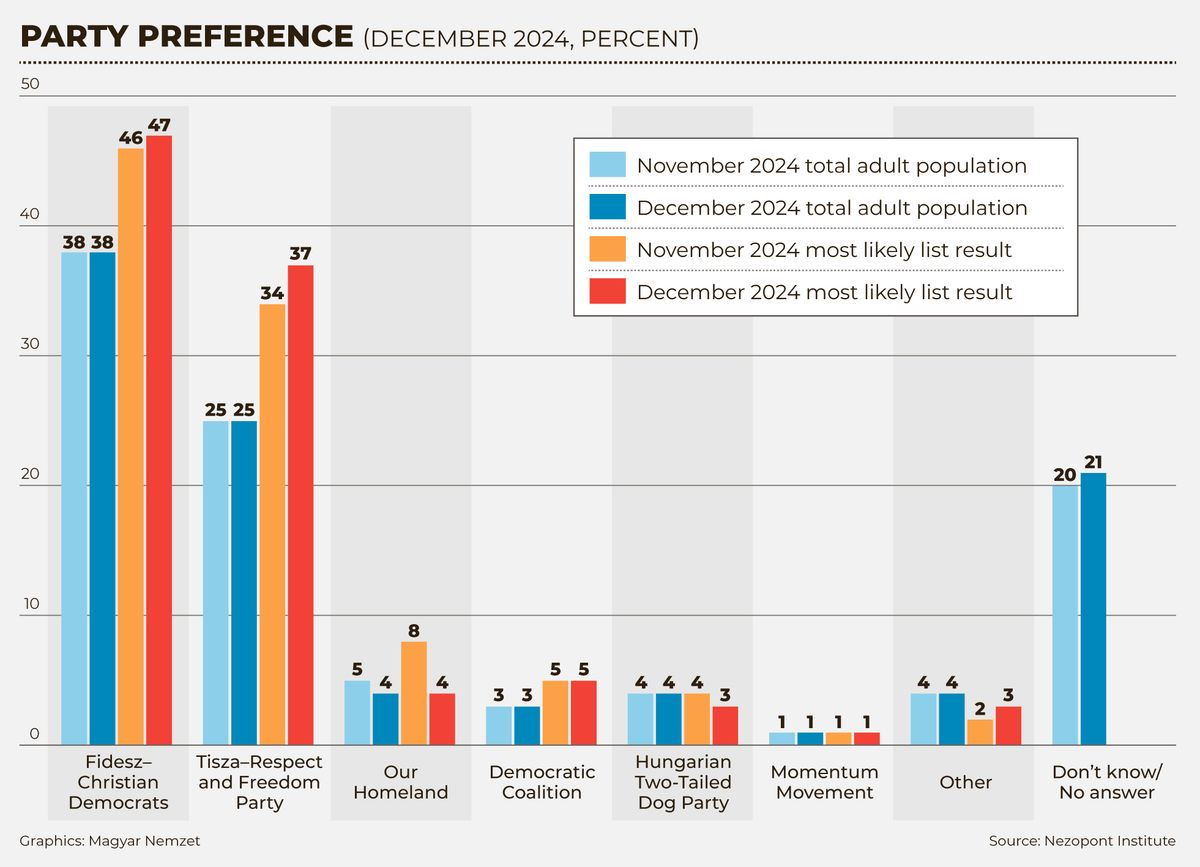In December, 38 percent (2.9 million people) of the total adult population eligible to vote (about 7.67 million people) support Fidesz, and 25 percent sympathize with the Tisza Party (1.9 million people), which is the same as the data collected in the previous month, according to the latest poll by the Nezopont Institute.

Active voters who are sure to participate make up 73 percent of the eligible electorate (5.6 million), in line with the turnout trends seen in past parliamentary elections.
The Nezopont Institute examines the declared party preference and the party preference identified with statistical methods among the undecided and floating voters on the basis of active voters, and this is used to estimate of the 'most likely list result'.
The studies by other institutes only reveal declared party preference and do not cover the group of active voters who do not declare their party preference, which can be as high as 15-20 percent in surveys.
A three-party parliament would be formed
According to the Nezopont Institute's December survey, the most likely list result for Fidesz-KDNP would be 47 percent (2.6 million voters), for the Tisza Party 37 percent (2.1 million voters), and five percent for the Democratic Coalition if elections were held this Sunday.
All other parties would remain below the five percent threshold,
including Our Homeland (four percent) and the Two-Tailed Dog Party (three percent), which appear to be the losers of the month. The survey shows that polarization has increased further since November, with Fidesz and Tisza benefiting from this (plus one percentage point and plus three percentage points respectively). However, the gap between the two political parties remains significant at ten percentage points.
Since the Tisza Party fails to run in any of the by-elections, Peter Magyar has been able to maintain his myth of victory among his supporters despite the data.
The full picture also includes the fact that the percentages of the "most likely list result" are not the same as the distribution of parliamentary seats, as individual constituencies play a key role in the Hungarian electoral system. Therefore, the Nezopont Institute modeled how the distribution of mandates would develop "this Sunday" after a hypothetical parliamentary election, taking into account trends in electoral history at polling station level and the new constituency boundaries.
























Szóljon hozzá!
Jelenleg csak a hozzászólások egy kis részét látja. Hozzászóláshoz és a további kommentek megtekintéséhez lépjen be, vagy regisztráljon!